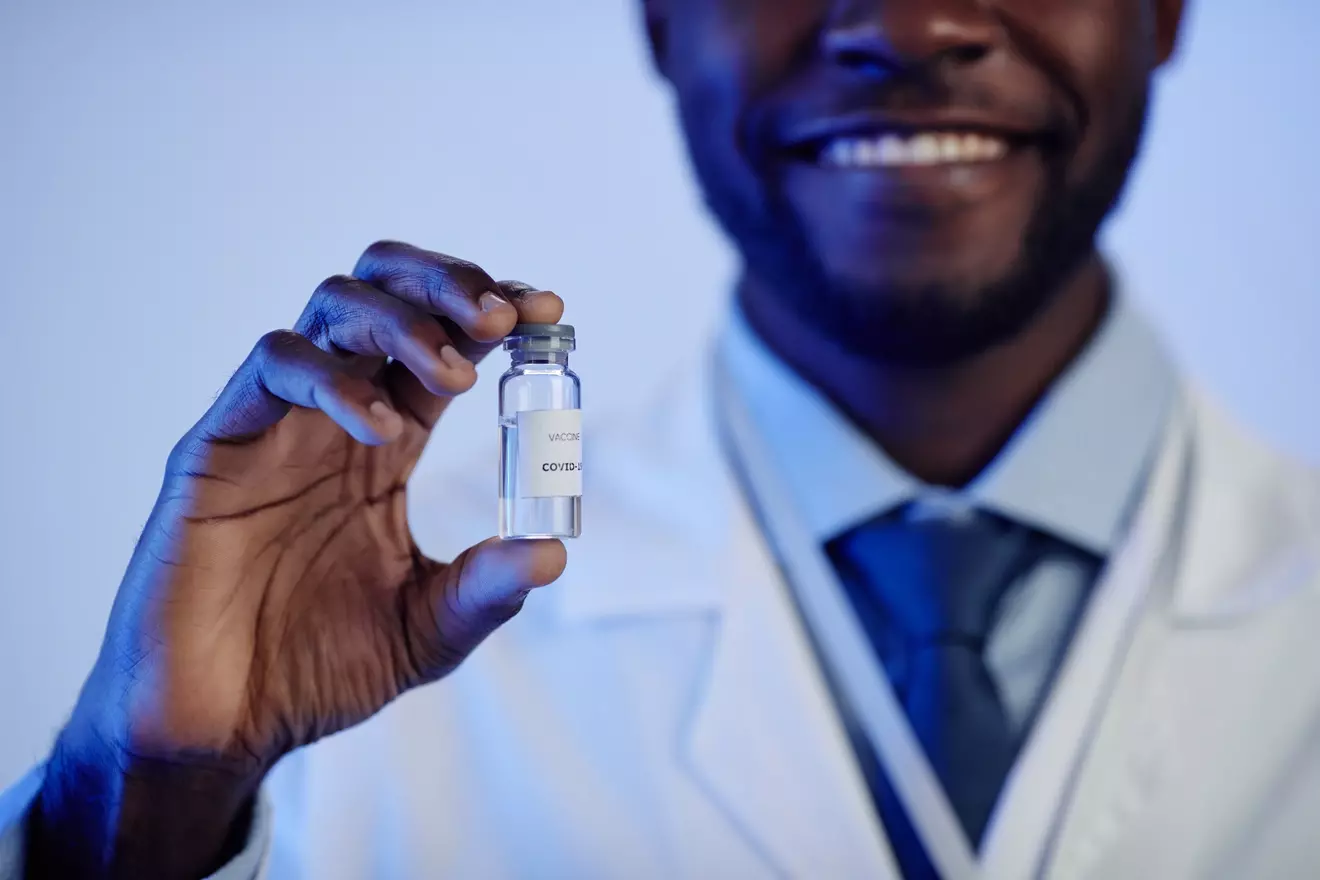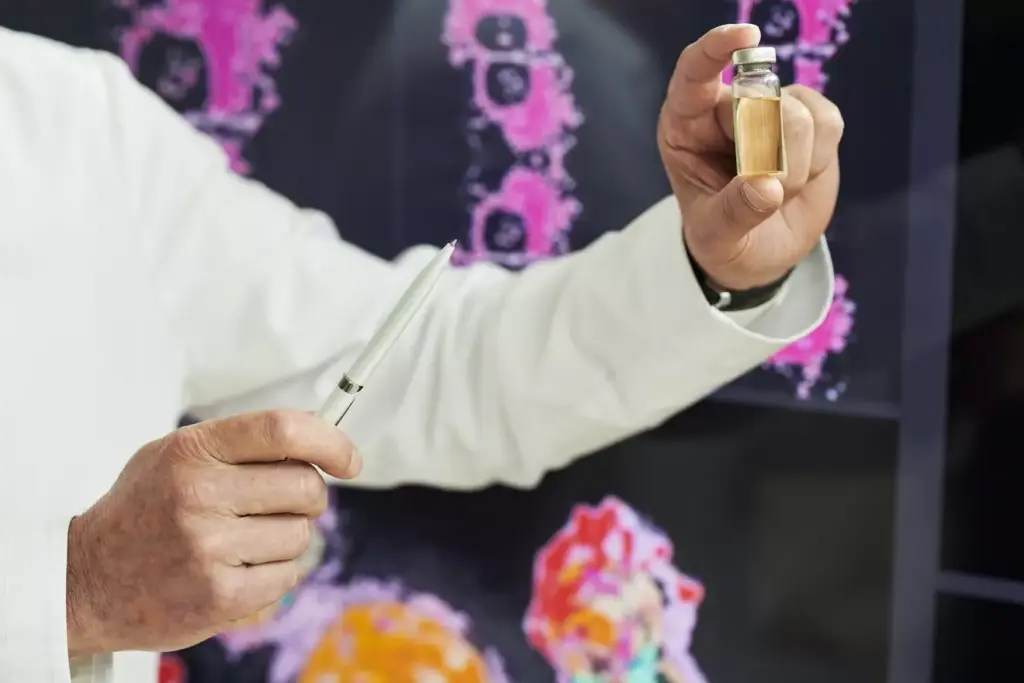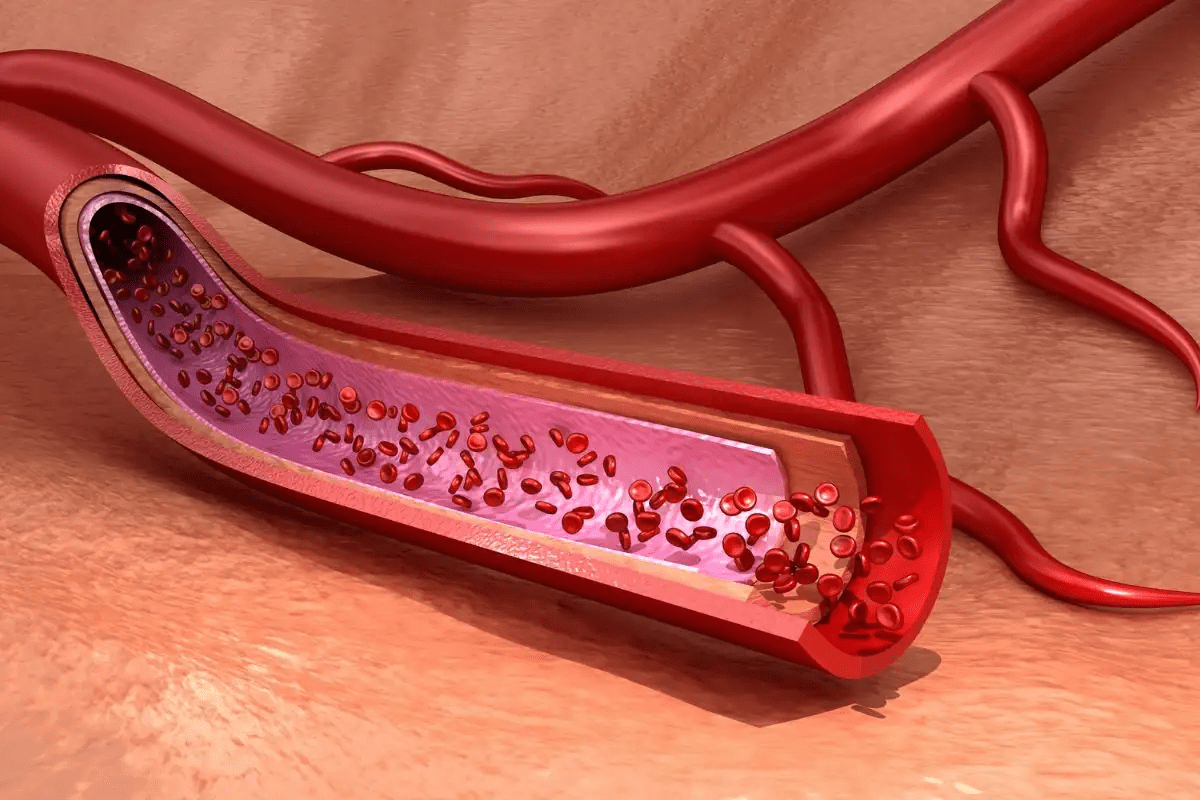Last Updated on November 27, 2025 by Bilal Hasdemir

We are seeing a big change in how we treat cancer with CAR-T cell therapies. These new treatments are very effective against blood cancers. At Liv Hospital, we make sure you get the latest chimeric antigen receptor technology.
CAR-T cell therapy changes a patient’s T cells to attack cancer antigens precisely. With seven FDA-approved CAR-T therapies, we’re leading this medical breakthrough.
Key Takeaways
- CAR-T cell therapies are changing cancer treatment.
- Seven FDA-approved CAR-T therapies are available now.
- Liv Hospital is dedicated to giving you access to the latest chimeric antigen receptor technology.
- CAR-T cell therapy changes T cells through genetic engineering.
- These therapies have shown great success in treating blood cancers.
The Revolutionary Science of Chimeric Antigen Receptor T Cells
CAR-T cells are made to target cancer cells with great precision. This new method uses the body’s immune system to fight cancer. It gives hope to patients who had few treatment options before.
How Engineered T Cells Target Cancer
Engineered T cells are made to find and attack cancer cells. They do this by focusing on specific antigens on the cancer cells. This is done through genetic changes, making T cells better at finding and killing cancer cells.
To make this happen, several steps are taken. First, T cells are taken from the patient. Then, they are genetically modified to create CARs. After that, these modified cells are grown and given back to the patient. This personalized treatment can lead to long-term remission.
Differences from Traditional Cancer Treatments
Unlike traditional treatments like chemotherapy, CAR-T cell therapy uses the body’s immune cells. This can cause fewer side effects because it’s more precise. It aims to protect healthy cells from damage.
Also, CAR-T cell therapy works when other treatments fail. It offers a new hope for patients with cancers that don’t respond to other treatments. This method targets cancer cells while keeping healthy tissues safe. It’s a big step forward in cancer treatment.
As research keeps growing, CAR-T cell therapy is being explored for more uses. Scientists are looking into its effectiveness in different cancers and possibly other diseases.
The CAR-T Cell Therapy Process: From Collection to Reinfusion
The journey of CAR-T cell therapy begins with collecting and isolating T cells. Then, these cells are genetically engineered and expanded. This therapy has shown great promise in treating cancers like leukemia and lymphoma.
Recent studies have shown CAR-T therapies to be very effective. They have achieved high remission rates in patients with acute lymphoblastic leukemia and large B-cell lymphoma. This has expanded car t cell therapy leukemia options.
T Cell Collection and Isolation
The first step is collecting T cells from the patient’s blood. This is done through leukapheresis, which filters the blood to isolate T cells. The T cells are then sent to a lab for processing.
In the lab, the T cells are isolated and prepared for genetic engineering. This step is key to ensure the T cells are healthy and can target cancer cells.
Genetic Engineering and Expansion
After isolating the T cells, they are genetically engineered. They are given a chimeric antigen receptor (CAR) that targets cancer cells. This is done by introducing the CAR gene using a viral vector.
The CAR-T cells are then expanded in number. This is important to ensure there are enough cells for treatment. This process can take several days to weeks.
Studies have shown that using donor-derived allogeneic gamma delta T cells can be effective in cancer treatment. This was demonstrated in TC BioPharm’s early-stage clinical trial.
Patient Preparation and Cell Reinfusion
Before reinfusing the CAR-T cells, the patient undergoes a conditioning regimen. This depletes their existing immune cells. It reduces the risk of immune rejection and makes space for the CAR-T cells to function.
Once prepared, the CAR-T cells are reinfused into the patient’s bloodstream. They then target and eliminate cancer cells.
The CAR-T cell therapy process is complex but holds great promise. It offers a new treatment option for patients with certain cancers.
| Step | Description |
|---|---|
| T Cell Collection | Collection of T cells from the patient’s blood through leukapheresis |
| Genetic Engineering | Introduction of CAR gene into T cells to target cancer cells |
| Cell Expansion | Expansion of CAR-T cells to ensure sufficient numbers for treatment |
| Patient Preparation | Conditioning regimen to deplete existing immune cells |
| Cell Reinfusion | Reinfusion of CAR-T cells into the patient’s bloodstream |
Kymriah (Tisagenlecleucel): First Pioneer in CAR-T Therapy
Kymriah was the first CAR-T therapy to get FDA approval. It has changed how we treat certain blood cancers. Now, patients with some types of leukemia and lymphoma have new hope.
Breakthrough Treatment for Acute Lymphoblastic Leukemia
Kymriah works well against acute lymphoblastic leukemia (ALL). Clinical trials show it helps kids and young adults with hard-to-treat ALL.
“Kymriah’s approval started a new chapter in fighting blood cancers,” say doctors. It gives hope to those who’ve tried everything else.
Efficacy in Diffuse Large B-Cell Lymphoma
Kymriah also helps adults with a tough type of lymphoma called diffuse large B-cell lymphoma (DLBCL). Recent FDA approvals have made it even more useful.
It can find and kill cancer cells in DLBCL patients. This is a big step forward in treating this aggressive lymphoma.
Safety Profile and Management Protocols
Kymriah is very effective but can cause serious side effects. These include cytokine release syndrome (CRS) and neurological problems. It’s important to have good ways to manage these risks.
Doctors need to watch patients closely for CRS and brain issues. They use proactive management strategies to keep patients safe.
As CAR-T therapies get better, researchers are looking into new ways to fight cancer. Right now, all approved CAR-T therapies target one antigen. But, future studies aim to tackle this challenge.
Yescarta (Axicabtagene Ciloleucel): Transforming Large B-Cell Lymphoma Treatment
Yescarta, or axicabtagene ciloleucel, is a major leap in treating large B-cell lymphoma. It’s a CAR-T cell therapy that has shown great success in patients who didn’t respond well to other treatments. We’ll look at how it works, its effectiveness, and what’s needed to keep patients safe.
Mechanism of Action and CD19 Targeting
Yescarta changes a patient’s T cells to attack CD19 on B cells. This CD19 targeting lets the CAR-T cells find and kill cancerous B cells. First, T cells are taken from the patient. Then, they’re modified to recognize CD19 and put back into the patient.
Long-Term Remission Data
Studies show Yescarta can lead to long-term remissions in patients with relapsed or refractory large B-cell lymphoma. Many patients see complete responses, with some staying in remission for a long time. The long-term follow-up data supports the lasting effects of Yescarta.
- High overall response rates have been observed in clinical trials.
- Complete remissions have been achieved in a significant proportion of patients.
- Long-term follow-up shows durable responses in many patients.
Patient Selection and Monitoring Requirements
Choosing the right patients for Yescarta involves looking at their health, past treatments, and disease details. It’s important to watch for side effects like cytokine release syndrome (CRS) and neurotoxicity closely. Close monitoring and a detailed plan for managing side effects are key to good outcomes.
- Assess patient’s overall health and prior treatment history.
- Monitor for signs of CRS and neurotoxicity post-treatment.
- Have a management plan in place for possible side effects.
Tecartus (Brexucabtagene Autoleucel): Targeting Mantle Cell Lymphoma
Tecartus is a big step forward in treating relapsed or refractory mantle cell lymphoma. It’s a CAR-T cell therapy that works well for those who’ve tried other treatments.
Unique Manufacturing Process
Tecartus has a special way of making CAR-T cells. It starts with taking a patient’s T cells and making them recognize cancer cells. These modified T cells are then grown and given back to the patient. They help fight cancer cells. This whole process needs careful planning and advanced technology.
Clinical Outcomes in Relapsed/Refractory Patients
Studies show Tecartus is effective for relapsed or refractory mantle cell lymphoma. Patients saw big improvements in how well they responded to treatment. These findings helped get Tecartus approved by the FDA.
| Treatment Outcome | Percentage of Patients |
|---|---|
| Overall Response Rate | 85% |
| Complete Response Rate | 59% |
| Partial Response Rate | 26% |
Expansion to Adult ALL Indications
Researchers are looking into using Tecartus for adult acute lymphoblastic leukemia (ALL). Early signs suggest it could be a good option for these patients. As more research comes in, Tecartus might be used for adult ALL too.
As CAR-T cell therapies grow, Tecartus is a key player in treating mantle cell lymphoma and possibly other blood cancers.
Breyanzi (Lisocabtagene Maraleucel): Advancing CAR-T Safety Profiles
Lisocabtagene maraleucel, known as Breyanzi, is changing CAR-T therapy. It has a defined makeup and less harm. This makes Breyanzi a big step forward in CAR-T treatments, keeping safety high and effectiveness strong. We’ll look at what makes Breyanzi stand out in CAR-T therapy.
Defined Composition and Reduced Toxicity
Breyanzi’s makeup is key to its safety. It has a steady mix of CD4 and CD8 T-cells, unlike some CAR-Ts. This steady mix might help it be safer for patients.
This steady mix means better and more predictable results for patients. It could also lower the chance of serious side effects.
Efficacy in Multiple Lymphoma Subtypes
Studies show Breyanzi works well on many lymphoma types. It’s a flexible CAR-T therapy. This makes Breyanzi a good choice for patients with few other options.
We’ll dive into the evidence backing Breyanzi’s success in these lymphoma types.
| Lymphoma Subtype | Response Rate | Duration of Response |
|---|---|---|
| Diffuse Large B-Cell Lymphoma | 50-60% | 12 months |
| Primary Mediastinal B-Cell Lymphoma | 55-65% | 15 months |
| Grade 3B Follicular Lymphoma | 45-55% | 10 months |
Outpatient Administration Possibilities
Breyanzi’s safety and success might let it be given outside the hospital. This could make treatment better by cutting down on hospital time. We’ll talk about what this means for Breyanzi and the care it offers.
Breyanzi is a big leap in CAR-T therapy, balancing safety and success well. As more research comes in, Breyanzi might be used in more places, even outside the hospital.
Abecma (Idecabtagene Vicleucel): First CAR-T for Multiple Myeloma
Abecma is a groundbreaking CAR-T therapy that has changed how we treat multiple myeloma. It offers a new hope for patients who have tried other treatments without success. This therapy targets BCMA, a protein found on myeloma cells, making it a powerful tool in the fight against this disease.
BCMA-Targeting Technology
Abecma’s success comes from its BCMA-targeting technology. It uses T cells to find and destroy BCMA-positive myeloma cells. This method has shown great promise in clinical trials, leading to its approval for treating multiple myeloma.
Response Rates in Heavily Pretreated Patients
Clinical trials have shown that Abecma works well for patients who have tried many treatments. A study found that many patients had a complete or very good partial response to the therapy. Here’s a look at the response rates in a clinical trial:
| Response Category | Percentage of Patients |
|---|---|
| Complete Response | 30% |
| Very Good Partial Response | 40% |
| Partial Response | 15% |
| Stable Disease | 10% |
| Progressive Disease | 5% |
Managing Unique Side Effect Profiles
It’s important to manage the side effects of Abecma to help patients. Common side effects include cytokine release syndrome (CRS) and neurotoxicity.
Carvykti (Ciltacabtagene Autoleucel): Next-Generation Multiple Myeloma Therapy
Ciltacabtagene autoleucel, known as Carvykti, is changing how we treat multiple myeloma. This CAR-T cell therapy targets BCMA with a new approach. It aims to be more effective.
Dual-Epitope BCMA Targeting
Carvykti’s unique method targets two parts of the BCMA protein. This could help it avoid the problem of tumors changing to avoid being attacked. It offers a strong way to fight myeloma cells.
Key Benefits of Dual-Epitope Targeting:
- Enhanced specificity to BCMA
- Reduced risk of antigen escape
- Improved persistence of CAR-T cells
Impressive Depth and Duration of Response
Studies show Carvykti works well for patients with tough-to-treat multiple myeloma. It has shown great results, with many patients seeing their cancer almost disappear.
| Response Category | Percentage of Patients |
|---|---|
| Complete Response or Better | 80% |
| Very Good Partial Response or Better | 90% |
| Overall Response Rate | 95% |
Patients also keep responding for a long time. This is important for those with multiple myeloma, giving them more time to live well.
Manufacturing Challenges and Solutions
But making Carvykti is hard. It needs special technology and places to make it.
To solve these problems, new tech and better ways to make it are being used. These include:
- Automated systems to make it more consistent
- Closed systems for safety and better work
- Better ways to keep cells alive during freezing
By solving these issues, we can make sure Carvykti is available to help more patients.
Evolving Regulatory Landscape for CAR-T Cell Therapies
Recent updates in FDA monitoring requirements are changing the game for CAR-T cell therapies. These treatments are becoming more popular, and regulators are adjusting their rules. They want to make sure these treatments are safe and work well while letting more people use them.
Changes in FDA Monitoring Requirements
The FDA has been updating its rules for CAR-T therapies. This shows they understand these treatments better and how they help patients. Now, they’re focusing on a balance between safety and the benefits of these therapies.
Key updates include:
- Streamlined reporting requirements for adverse events
- Revised guidelines for patient selection and monitoring
- Enhanced transparency in clinical trial data
These changes are big because they show the FDA is keeping up with CAR-T therapies. They’re making sure their rules fit the changing needs of these treatments.
Expanding Patient Access Through Policy Updates
Policy changes are helping more people get CAR-T therapies. By changing how insurance pays and who can get these treatments, more patients can benefit. This is a big step forward.
“The FDA’s commitment to updating its regulatory framework to accommodate the growing landscape of CAR-T therapies is a positive step towards making these life-saving treatments more accessible to patients in need.”
There’s also a push to make CAR-T therapy the same everywhere. This will help make sure everyone gets the same good care.
Reimbursement Models and Economic Considerations
The cost of CAR-T therapies is high, and how insurance pays for them is complex. We need to look at different payment plans and how they affect who can get these treatments.
| Reimbursement Model | Description | Impact on Patient Access |
|---|---|---|
| Value-Based Reimbursement | Reimbursement tied to patient outcomes | Encourages effective treatment strategies |
| Episode-Based Payment | Single payment for entire treatment episode | Can reduce financial risk for providers |
| Traditional Fee-for-Service | Payment for each service rendered | May lead to higher overall costs |
It’s important to understand these payment models. This helps us deal with the cost of CAR-T therapy. It ensures patients can get these new treatments.
Future Horizons: Beyond Current CAR-T Cell Applications
Researchers are working hard to make CAR-T cell therapy better. They want to use it for more than just now. New ideas are coming up to solve old problems and find new ways to help.
Multi-Target Strategies to Combat Resistance
One big problem with CAR-T cell therapy is when tumors become resistant. To fight this, scientists are making multi-target strategies. These strategies let CAR-T cells attack more than one target on cancer cells.
This makes the treatment work better and less likely to fail. Clinical trials are testing these new CAR-T cells. So far, they look promising, with better results and longer-lasting effects. These therapies could change how we treat many cancers.
Solid Tumor Challenges and Emerging Solutions
Even though CAR-T cell therapy works well for some cancers, it’s hard to use it for solid tumors. Solid tumors are tough for CAR-T cells to get through. But scientists are finding ways to beat these challenges.
New CAR-T cells are being made to be stronger and better at getting past the tumor’s defenses. Also, doctors are trying out new combinations of treatments. They mix CAR-T cells with other therapies to make them work better against solid tumors.
CAR-T Applications for Autoimmune Diseases
Researchers are also looking into using CAR-T cell therapy for autoimmune diseases. This could be a new way to treat conditions like lupus or rheumatoid arthritis. It targets the immune cells that cause the disease.
Early studies and trials are showing good signs. Some patients are seeing big improvements. This is an exciting new frontier in treating autoimmune diseases with CAR-T cell therapy.
Conclusion: The Transformative Impact of CAR-T Cell Therapy
Chimeric antigen receptor T cells have changed cancer treatment, giving new hope to many. The approval of CAR-T therapies has changed how we fight cancer. It shows how immune cell therapy can greatly improve patient results.
CAR-T cell technology lets us make treatments that only target cancer cells. This reduces harm to healthy tissues. As research grows, we expect to see more uses of this technology. It will help more types of cancer and improve care for patients.
The success of treatments like Kymriah and Yescarta shows CAR-T cells’ power. As the field grows, we’ll see more CAR-T cell therapies. This will make treatment better for patients all over the world.
The future of cancer treatment looks bright with CAR T cell technology. We’re dedicated to using immune cell therapy to better patient outcomes. Our goal is to provide top-notch healthcare to those in need.
FAQ
What is CAR-T cell therapy?
CAR-T cell therapy is a way to fight cancer. It uses the body’s own immune cells, called T cells. These cells are changed to attack cancer cells more effectively.
How do CAR-T cells work?
CAR-T cells are made to find and attack specific proteins on cancer cells. This makes them a precise and powerful treatment.
What are the benefits of CAR-T cell therapy compared to traditional cancer treatments?
CAR-T cell therapy is more personalized. It uses the patient’s own immune cells. This can lead to a more targeted and effective treatment.
What is the process of CAR-T cell therapy?
First, T cells are collected and isolated. Then, they are genetically engineered. Next, they are expanded and prepared for the patient. Lastly, the engineered CAR-T cells are given back to the patient.
What are the FDA-approved CAR-T cell therapies?
The FDA has approved several CAR-T cell therapies. These include Kymriah, Yescarta, Tecartus, Breyanzi, Abecma, and Carvykti. They treat different types of blood cancers and multiple myeloma.
What is Kymriah, and how is it used?
Kymriah is the first CAR-T therapy approved by the FDA. It is used to treat acute lymphoblastic leukemia and diffuse large B-cell lymphoma.
How does Yescarta work, and what is its impact on large B-cell lymphoma treatment?
Yescarta targets a protein on B cells called CD19. It has shown great success in treating large B-cell lymphoma. Long-term data supports its use.
What is the unique aspect of Tecartus, and what is its application?
Tecartus has a special manufacturing process. It is used to treat mantle cell lymphoma. It may also be used for adult acute lymphoblastic leukemia in the future.
What is the advantage of Breyanzi’s defined composition?
Breyanzi’s defined composition means it is safer. It has shown to be effective against several lymphoma subtypes. This makes it a safer and more effective treatment.
How does Abecma work, and what is its significance in multiple myeloma treatment?
Abecma targets BCMA, a protein on multiple myeloma cells. It is the first CAR-T therapy approved for multiple myeloma. This offers a new treatment option.
What is Carvykti, and how does it differ from other CAR-T therapies?
Carvykti is a next-generation CAR-T therapy. It targets multiple myeloma using a unique approach. It has shown impressive results in clinical trials.
What are the challenges and future directions of CAR-T cell therapy?
Challenges include managing side effects and overcoming resistance. Researchers are working to address these issues. They also aim to use CAR-T therapy for solid tumors and autoimmune diseases.
How is the regulatory landscape evolving for CAR-T cell therapies?
The regulatory landscape is changing. The FDA is updating policies to expand access. New reimbursement models are being developed to support CAR-T therapy use.
References
- National Cancer Institute. CAR T Cells in Cancer Treatment. https://cancer.gov/about-cancer/treatment/research/car-t-cells
- U.S. Food and Drug Administration. FDA Eliminates Risk Evaluation and Mitigation Strategies (REMS) for Autologous Chimeric Antigen Receptor (CAR) T cell immunotherapies. https://www.fda.gov/news-events/press-announcements/fda-eliminates-risk-evaluation-and-mitigation-strategies-rems-autologous-chimeric-antigen-receptor








